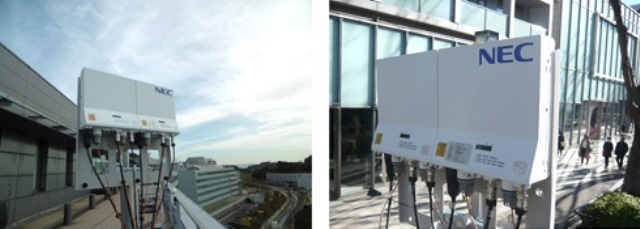 Telecom equipment company NEC Corporation has launched its Smart Wireless Transport Network (Smart WTN) solution for managing bottlenecks in the mobile backhaul for 5G networks.
Telecom equipment company NEC Corporation has launched its Smart Wireless Transport Network (Smart WTN) solution for managing bottlenecks in the mobile backhaul for 5G networks.
Featuring a high capacity pipe for dynamic network optimization, the Smart WTN combines NEC’s iPASOLINK EX, an compact radio communication system that achieves wireless transmission capacity of 10Gbps in the E-band range, with a Backhaul Resource Manager (BRM) SDN controller that controls both wired and wireless networks, as well as NEC’s Artificial Intelligence (AI) technology.
Telecom operators need to accelerate the adoption of small cells and expand the capacity of mobile backhaul that connects cell sites to accommodate high speed communications and the IoT. This is in addition to maintaining legacy macro cells.
NEC said the Smart WTN solution enables flexible network build-out, makes valid traffic and defect predictions, adapts to environmental and behavioral changes accordingly, and dynamically modifies operations in order to improve efficiency and minimize power consumption.
“Based on our global deployment of reliable mobile infrastructure with the NEC PASOLINK series, NEC is able to provide optimized solutions for 5G that integrate best-of-breed products from a wide variety of vendors and disciplines,” said Atsushi Noro, general manager, Mobile Wireless Solutions Division, NEC Corporation.
NEC completes verification trials with NTT Docomo in Tokyo
NEC Corporation has completed verification trials with NTT DOCOMO in central Tokyo and Kanagawa Prefecture using Massive Multiple Input Multiple Output (MIMO), a core technology for 5G base stations.
The trials used NEC’s massive-element Active Antenna System (AAS) supporting the low-SHF band.
The trials employed the low-SHF band-compatible AAS in the base station for both outdoor environments, where radio waves are reflected or diffracted due to buildings, utility poles, vehicles and people, and indoor environments, which also include many obstacles, such as columns and walls.
NEC’s AAS adopts digitized antenna beam control technology, which improves the precision of beam forming. While transmitting beams to the target mobile handsets, it is capable of forming beams that counteract interfering signals using the multi-path. It can form beams that improve communication quality by efficiently combining the multi-path of its own signals with the direct waves.
The features of NEC’s AAS enable concurrent communication with several handsets, though they are close to each other, while maintaining high communication quality. In the trials, NEC proved that use of the AAS can result in improved capacity and quality of communication between a base station and handsets, while confirming that spectral efficiency was maintained at a level roughly 8 times higher than that achieved by LTE in indoor environments.
“Thanks to NEC’s contribution on the massive-element AAS supporting the low-SHF band, we were able to achieve successful outcomes from the trials,” said Takehiro Nakamura, managing director of the 5G Laboratory at NTT DOCOMO.
NEC research into core technologies for 5G, including the massive-element AAS and antenna beam control, will contribute to the successful roll-out of 5G in the near future.
“Among the high frequency bands, we are working especially hard to put the low-SHF band into practical use, since it is expected to enter into commercial use around 2020,” said Nozomu Watanabe, general manager, Mobile Radio Access Network Division, NEC Corporation.





